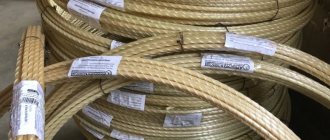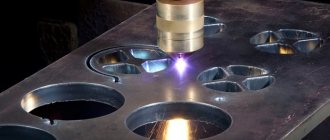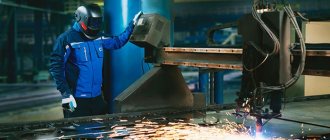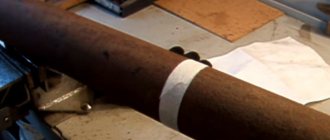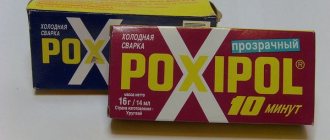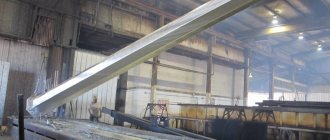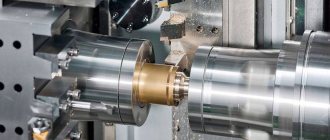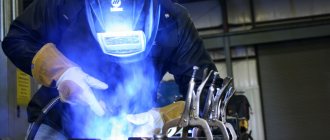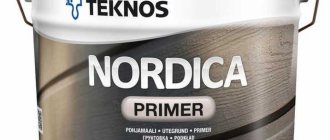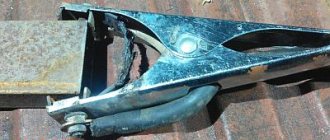Metal cutting is a technological process of cutting rolled profile sheets or blanks of given sizes, shapes and configurations. Depending on the technical and chemical characteristics of the source material and the production of parts of a certain shape, various types of metal cutting are used.
Metal cutting can be done in two ways - mechanically: scissors, milling, sawing, drilling, impact cutting and thermal processing.
The main types of metal cutting are carried out in accordance with the requirements of GOST 14792-80, used in the processing of parts and workpieces.
Thermal effects on a metal product to form individual parts can be separating, surface or creating holes. Thermal methods of cutting metal make it possible to produce parts to specified sizes and adjust individual parts of the product. The advantage of this metalworking technique is the ability to cut according to specified parameters even with large metal thicknesses.
Oxygen cutting
Oxygen cutting involves burning the metal being cut in an oxygen jet and removing the resulting oxides with this jet.
Rice. 1. The process of oxygen cutting of metal.
Oxygen cutting technology
The metal being cut is preheated by the preheating flame of the cutter, which is formed as a result of the combustion of flammable gas (Acetylene, propane) mixed with oxygen. When the ignition temperature of the metal in oxygen is reached, the pure oxygen valve (99–99.8%) opens on the cutter at a pressure of up to 12 bar and the cutting process begins. Pure oxygen from the central channel of the mouthpiece, intended to oxidize the metal being cut and remove oxides, is called cutting, in contrast to the oxygen of the heating flame, which comes mixed with flammable gas from the side channels of the mouthpiece.
A jet of cutting oxygen displaces molten oxides into the cut, which in turn heat the next layer of metal, which contributes to its intense oxidation. As a result, the sheet being cut is subjected to oxidation throughout its entire thickness, and molten oxides are removed from the cutting zone under the influence of a jet of cutting oxygen.
Oxygen cutting technique
The process of oxygen cutting begins with the fact that the surface of the sheet being cut should be cleaned of scale, paint, oil, rust and dirt. Particular attention is paid to cleaning the surface of the sheet from scale, since it prevents the metal from coming into contact with the flame and jet of cutting oxygen. To do this, it is necessary to heat the surface of the steel with the heating flame of the cutter, as a result of which the scale will bounce off the surface. Heating should be carried out in a narrow strip along the intended cutting line, moving the flame at a speed approximately corresponding to the cutting speed.
Before oxygen cutting, the metal is heated from the surface at the initial point of the cut to its ignition temperature in oxygen. After the cutting oxygen jet is launched and the process of metal oxidation begins along the thickness of the sheet, the cutter is moved along the cutting line.
Rice. 2. Oxygen cutting of metal.
As a rule, straight-line oxygen cutting of steel sheets up to 50 mm thick is performed first by installing the cutting nozzle of the nozzle in a vertical position, and then tilted to the side opposite to the cutting direction (usually 20–30º). Tilt of the cutting nozzle of the mouthpiece to the side accelerates the process of metal oxidation and increases the speed of oxygen cutting, and, consequently, its productivity. With a thicker steel sheet, at the beginning of cutting, the cutter is tilted 5º in the direction opposite to the cutting movement.
Equipment:
Oxygen cutting uses equipment such as cutters, hoses, a cylinder regulator, gas cylinders in combination with a gas train, or a gasifier.
Waterjet method of cutting metal products
We are talking about cutting metal by feeding a mixture of sand and water under pressure through a narrowly directed nozzle. Sand and water can cut metal 30 cm thick, after which the edges do not require additional processing. It is worth mentioning that this method of cutting metal products is considered innovative.
The method is not one of the hot cutting methods, since it does not involve thermal effects on the metal. This feature allows you to avoid deformation of the product.
The disadvantage of the waterjet method is the inability to cut metals with rust spots. In addition, the equipment is expensive, which makes it inaccessible to individuals.
Oxygen flux cutting
This type of metal processing was developed for materials that are difficult to cut with oxygen. Such materials are cast iron, alloy steels, non-ferrous metals, etc. Oxygen-flux cutting differs from conventional oxygen cutting only in that, in addition to the heating flame and jet of cutting oxygen, flux powder is supplied to the cutting zone, which ensures the cutting process due to thermal, chemical and abrasive action.
The technology and equipment for oxygen-flux cutting does not differ from conventional oxygen cutting, with the exception of the nuances outlined below.
During oxygen-flux cutting, powdered fluxes are additionally introduced into the oxygen cutting stream, the particles of which, when burned, produce a significant thermal effect, promoting the melting of refractory oxides on the surface of contact of oxygen with the metal being processed without significant melting of the metal edges under this surface layer. The basis of such powdered fluxes is iron powder.
During the combustion of the flux, highly heated FeO particles are formed, which contribute to the formation of complex, lower-melting compounds (FeO.SiO2; FeO.Cr2O3, etc.) and facilitate the access of oxygen to the unoxidized parts of the metal due to the removal of refractory oxides.
Thus, in addition to the processes of metal oxidation and blowing of molten slag during conventional oxygen cutting, during oxygen-flux cutting there is an intensification of temperature in the reaction space as a result of combustion of flux powder (iron, ferrophosphorus, aluminum), accompanied by fluxing of refractory oxides and abrasive them removal (scale, quartz sand, alumina). Oxygen-flux cutting is used both as a separation and as a surface cutting.
Equipment:
When using oxygen-flux cutting, equipment such as containers for flux (flux feeder), cutters, hoses, a balloon regulator, gas cylinders in combination with a gas train, or a gasifier are used.
Table 2. Flux composition for cutting various materials
CNC thermal metal cutting
The CNC unit ensures maximum equipment performance and the best quality of manufactured elements.
The advantages of devices with a built-in software control unit include:
- The ability to create products that require jewelry precision. The hardware and software follow the algorithm laid down by the development engineer.
- The ability to repeat manipulations, limited only by the amount of oxygen and the durability of the device.
- Impressive performance. The operation of the equipment is not limited by human physiological capabilities.
The above advantages justify the significant popularity of this type of units in production.
However, purchasing equipment with a CNC unit is not economically viable for one-time operations. In this regard, one-time production of parts is entrusted to third-party manufacturers who have the necessary stationary devices. It should be borne in mind that an exchange of services of this kind is divided into two categories: the actual creation of the required elements and the writing of software for control units.
Oxygen lance cutting
An oxygen lance is a steel tube through which oxygen is supplied.
Oxygen lance cutting technology.
The working end of the oxygen lance is preheated to a temperature of 1350–1400°C using an external heating source: a welding arc, a preheating torch flame, or a welding torch flame. After the spear is ignited, the extraneous source of heat is removed. As a result of the supply of oxygen, the working end of the spear begins to burn intensely, reaching a temperature of 2000°C. To increase the thermal power of the oxygen lance, a steel rod or other profile is usually placed inside the tube.
Rice. 3. Oxygen lance cutting process
Oxygen lance cutting technique.
The oxygen lance is pressed against the surface of the material being burned. Having deepened the working end of the spear into the material, increase the oxygen pressure to the required working value, periodically performing reciprocating (with an amplitude of 10–20 cm) and rotational (at an angle of 10–15° in both directions) movements with the spear. When burning a hole, the end of the spear must be constantly pressed against the material, tearing it off only for a short time during a back-and-forth movement. The slags formed are carried by pressure into the gap between the spear tube and the wall of the hole being burned.
Burning holes in cast iron is used in metallurgical production to form holes in slagged cast iron masses that are subject to destruction in blast pits for remelting.
The productivity of cutting cast iron with an oxygen lance is extremely low. The burning speed of a hole with a diameter of 50–60 mm is no more than 50 mm/min. with an oxygen consumption of about 35 m3 per 1 m of hole and 25 m of tubes.
In some cases, to increase the efficiency of the cutting process, iron powder is supplied to the spear along with oxygen. In this case, it is possible not only to burn holes, but also to separate steel and concrete.
Equipment:
When cutting with an oxygen lance, equipment such as an oxygen lance, hoses, a cylinder regulator, gas cylinders in combination with a gas train, or a gasifier are used.
Specialized equipment
Not only universal equipment, but also highly specialized equipment is suitable for cutting pipe edges for welding. You can choose based solely on the volume of work.
If we talk about universal machines, we can highlight angle grinders, bench tools and files.
Promotech presents a huge selection of narrowly targeted chamfering machines: edge cutters and chamferers of the BM and PRO series, which are perfect for performing a large volume of similar seams.
In cases where, according to the manufacturing technology of a part, its entire surface is subjected to one type of treatment, this is indicated on the drawing in the technical requirements, for example: “Anneal”, “Cement 0.5. 0.6 mm; 53. 60 HRC " " 30..35 HRC ".
In cases where, according to the manufacturing technology of a part, most of it is subjected to one type of processing, and the remaining parts are subject to protection from such effects, then the technical requirements must contain an entry of the following type: “35.40 НРС, except for the place specifically designated”, “45 50 HRC, except for surface A, etc.
Changes in metal properties
Heat treatment on drawings
In cases where areas or surfaces of products that are defined by a technical concept or term must be processed (for example, surfaces designated by alphabetic symbols, surfaces of a gear wheel or teeth, shanks of cutting tools or their working parts), then the current standards allow them do not indicate using a thick dash-dotted line, unless this will lead to misunderstanding of the drawing. In the technical requirements, the following type of inscription is made: “Surface B - 40.45 HRC”, “Shank h0.7. 0.9 mm; 45. 50 HRC ", etc.
Air arc cutting
Air arc cutting involves melting metal along the cut line with an electric arc and forcing the removal of the melt formed under the action of the arc with compressed air.
Rice. 4. Scheme of air-arc cutting
Air arc cutting technology.
Air is supplied along a non-consumable electrode (usually carbon or graphite) and in a special electrode holder. An electric arc, as a rule, burns with a direct current of reverse polarity.
Air arc cutting technique.
First, the arc is ignited, then the metal is cut with an electric arc. A jet of air is used to blow debris out of the cut area. When cutting, the electrode is rested with its end on the metal surface at an angle of 80-85° to it, with an inclination towards the cutting direction.
The quality of the cut surface and the metal adjacent to it is low. In the surface layer and on edges with a depth of 0.1–0.3 mm, an increase in carbon content may be observed, as a result of which the process of crack formation may begin. To prevent an increase in carbon content, it is necessary, if possible, not to touch the hot metal with the electrode. After air-arc cutting, it is necessary to thoroughly clean the surfaces with a brush until they have a metallic shine and carry out an inspection to determine the absence of surface defects.
Air arc cutting is usually used for surface treatment (gouging) or as separation cutting into scrap steel, aluminum, copper, titanium.
Equipment:
Air arc cutting uses equipment such as cutters, cables and hoses, compressor units, and a power source.
Types of mechanized methods of cutting and chopping metals
For mechanical cutting of workpieces, all kinds of cutters, saws, abrasive wheels, and presses are used. Mechanical methods are used to cut, for example, gas and oil pipelines, as well as any pipelines for pumping flammable materials. Fireless metal cutting technology is popular both in industry and in everyday life.
Abrasive cutting wheels can be used in both hand-held and stationary tools. In the process of cutting a metal part with a rotating abrasive wheel, due to strong friction, the metal in the impact zone quickly heats up and burns out. At the same time, the cutting width is small and does not exceed 2 mm. Cutting is carried out with high speed and accuracy. It is convenient to use this equipment in domestic construction, repairs and installation of water pipelines.
For mechanical cutting of metal sheets, in addition to cutting, chopping is also widely used, in which a knife is pressed against a horizontally located sheet, and the workpiece is cut at the point of contact using hydraulic or pneumatic force. The operation of such a press is based on the principle of ordinary scissors, when two blades mutually slide past each other. To create force, in addition to pneumatics and hydraulics, eccentric mechanisms are also used.
Pneumatic or hydraulic shears are called guillotines; with sufficient power, they are capable of cutting strong and thick sheets of metal alloys. However, this method is not applicable to brittle and non-plastic materials; for cutting them it is better to use laser, plasma and other types of processing. Guillotines can be equipped with software that can increase the speed and accuracy of operations. This is the advantage of using this equipment.
Cutting of profiled sheets can be done with mobile saber guillotines, which do not require an electrical network and operate solely using human muscle power. The corrugated sheet is usually coated with galvanization or a polymer material, so it should not be thermally treated or cut using a grinder. The resulting local destruction of the coating creates pockets of corrosion that are quite difficult to eliminate.
Metal tiles can only be subjected to mechanical processing. In the longitudinal direction, the profile is cut with a roller cutter or metal scissors. For cutting in transverse or diagonal directions, use special electric scissors with appropriate attachments.
Oxygen arc cutting
Oxygen-arc cutting technology.
In oxygen-arc cutting, an arc burns between a consumable electrode and the metal being cut. The welding electrode is tubular and cutting oxygen is supplied through a channel inside the electrode. The arc provides heating of the metal, and oxygen, intensively oxidizing the iron, ensures its combustion and blowing out of the cut zone (Fig. 5).
Fig.5. Scheme of oxygen-arc cutting
Oxygen-arc cutting is used primarily for special work: cutting metal under water, construction and installation work, repairs, and also in other cases when it is necessary to perform short cuts (up to 500 mm).
Oxygen-arc cutting technique.
To cut, an arc is first ignited, then, when a molten point is formed, a flow of cutting oxygen is opened using the regulator handle on the holder, it quickly oxidizes the metal and blows it out.
Oxygen-arc cutting is used for cutting ferrous and non-ferrous metals up to 120 mm thick. Current strength 200–350A, oxygen pressure 3–10 bar (depending on thickness).
Semi-automatic oxygen-arc cutting is possible. In this case, the wire is blown with oxygen concentrically.
Equipment:
When using oxygen-arc cutting, equipment such as cutters, cables and hoses, a power source, a cylinder regulator, oxygen cylinders in combination with ramp equipment, or a gasifier are used.
Description and features of the process
Metal cutting is a technological process, the purpose of which is to divide a workpiece into separate parts or produce parts of various shapes. During machining, various milling and turning machines, as well as special metal-cutting equipment, can be used.
When carrying out the technological process under consideration, the following points are taken into account:
- Mechanical processing leads to heating of the material. Almost all metals react to heating in the same way - a change in the basic physical and mechanical properties occurs, the degree of ductility increases, and strength decreases. When it is necessary to obtain a high-quality cut, heating of the material structure is eliminated.
- Not all alloys can be processed without preheating. There are difficult-to-cut alloys, the cutting of which is possible only if the structure is preheated.
- When processing, attention is paid to such qualities as thermal conductivity, hardness and weldability.
Most often, cutting steel and other alloys occurs at the time of preparing raw materials for further processing, production of products, or, if necessary, changing the size and shape of finished products at the time of installation work. There are a huge number of cutting methods, each with its own specific properties.
Plasma cutting
Plasma cutting involves the penetration of the metal being cut due to the heat generated by a compressed plasma arc, and the intensive removal of the melt by a plasma jet.
Plasma cutting technology
Plasma is a high-temperature ionized gas capable of conducting electrical current. A plasma arc is obtained from a conventional arc in a special device - a plasma torch - as a result of its compression and injection of a plasma-forming gas into it. There are two plasma cutting schemes:
- plasma arc cutting
- plasma jet cutting
Rice. 6. Plasma cutting diagram
In plasma arc cutting, an arc burns between a non-consumable electrode and the metal being cut (direct arc). The arc column is combined with a high-speed plasma jet, which is formed from the incoming gas due to its heating and ionization under the action of the arc. For cutting, the energy of one of the near-electrode spots of the arc, the plasma of the column and the torch flowing from it are used.
When cutting with a plasma jet, the arc burns between the electrode and the forming tip of the plasma torch, and the object being processed is not included in the electrical circuit (indirect arc). Part of the plasma of the arc column is removed from the plasmatron in the form of a high-speed plasma jet, the energy of which is used for cutting.
Plasma arc cutting is more efficient than plasma jet cutting and is widely used for metal processing. Plasma jet cutting is used less frequently and is primarily used for processing non-metallic materials, since they do not necessarily need to be electrically conductive.
Rice. 7. Plasma cutting
The technological capabilities of the process of plasma cutting of metal (speed, quality, etc.), as well as the characteristics of the main components of plasma torches are determined, first of all, by the plasma-forming medium.
Metal plasma cutting technology
Plasma cutting is economically feasible for processing:
- aluminum and alloys based on it up to 120 mm thick;
- copper up to 80 mm thick;
- alloy and carbon steels up to 50 mm thick;
- cast iron up to 90 mm thick.
The cutter is positioned as close as possible to the edge of the metal being cut. After pressing the torch switch button, the pilot arc is ignited first, and then the cutting arc, and the cutting process begins. The distance between the surface of the metal being cut and the end of the cutter tip must remain constant. The arc should be directed downwards and usually at right angles to the surface of the sheet being cut. The cutter is slowly moved along the planned cutting line. The speed of movement must be adjusted so that sparks are visible from the back of the metal being cut. If they are not visible from the reverse side, then the metal has not been cut through, which may be due to insufficient current, excessive speed, or the direction of the plasma jet not at a right angle to the surface of the sheet being cut.
Plasma-forming gases
Plasma cutting of aluminum and its alloys with a thickness of 5–20 mm is usually carried out in nitrogen, with a thickness of 20–100 mm – in nitrogen-hydrogen mixtures (65–68% nitrogen and 32–35% hydrogen), with a thickness of over 100 mm – in argon- hydrogen mixtures (35–50% hydrogen).
Plasma cutting of copper can be carried out in nitrogen (for a thickness of 5–15 mm), compressed air (for small and medium thicknesses), or an argon-hydrogen mixture.
Plasma cutting of high-alloy steels is effective only for thicknesses up to 100 mm (for larger thicknesses, oxygen-flux cutting is used). For thicknesses up to 50–60 mm, air plasma cutting and manual cutting in nitrogen can be used; for thicknesses over 50–60 mm, nitrogen-oxygen mixtures can be used.
Cutting stainless steel up to 20 mm thick can be done in nitrogen, 20–50 mm thick – in a nitrogen-hydrogen mixture (50% nitrogen and 50% hydrogen). It is also possible to use compressed air.
For cutting carbon steels, compressed air (usually for thicknesses up to 40–50 mm), oxygen and nitrogen-oxygen mixtures are used.
Table 3. Approximate modes of air plasma cutting of metal
We can highlight the following advantages of plasma cutting in comparison with gas methods:
- Higher speed of cutting metal of small and medium thickness
- Versatility - plasma cutting is used for processing steel, aluminum and its alloys, copper and alloys, cast iron and other materials
- Precise and high-quality cuts, while in most cases subsequent machining is eliminated or significantly reduced
Cost-effectiveness of air plasma cutting - there is no need for expensive gases (acetylene, oxygen, propane-butane)
- Ability to cut parts of complex shapes;
- Short pierce time (oxyfuel cutting requires a long preheat)
- Safe cutting as there are no explosive gas cylinders
The disadvantages of plasma cutting compared to gas cutting methods are:
- The maximum cutting thickness is usually 80–100 mm (oxygen cutting can process cast iron and some steels up to 500 mm thick)
- Equipment costs are much higher
- Increased requirements for equipment maintenance
- High noise level due to gas flow from the plasmatron at transonic speeds
- Nitrogen-containing emissions are harmful to the body (when using nitrogen), to reduce which the cut product is immersed in water.
Equipment:
Plasma cutting uses equipment such as a plasma torch, power source, compressor, and gas cylinders.
Types of equipment
Machines designed for thermal cutting are divided into several types according to purpose, design and level of automation. Let's take a closer look at each type of machine.
Portal machines
They are a three-axis processing complex with a cutting table. Guides for longitudinal movement, depending on the type of equipment, can be located directly on the coordinate table or independently of it.
Photo 1. Gantry machine with guide rails on the work table
The machines are produced in stationary and portable types. They also differ in the size of the working area - the standard processing width can be from 1.5 to 8 m. They can work both in mechanized mode (the cutting process is controlled by the operator) and in automatic mode (cutting of workpieces is carried out using a CNC system).
Console models
Structurally, they consist of a guide rail and a console with a cutting device for air plasma (plasma torch) or oxygen gas cutting (cutter). The basis of such machines is a control and executive unit, which moves along a guide rail, providing longitudinal movement of the cutting apparatus. It also drives the console, which ensures the lateral movement of the cutting device.
Photo 2. Exterior view of a console-type machine
In terms of functionality and cutting accuracy, cantilever thermal cutting machines are in no way inferior to portal ones. However, they are mobile, so they can work with rolled metal of limited sizes.
Articulating and console equipment
The design of these machines consists of a column with a rotating crossbeam along which the cutting device moves. Cutting is done using a special compass device or according to a template using a magnetic copying device.
Photo 3. Articulating-cantilever thermal cutting machine
Machines of this type are distinguished by increased accuracy of reproduction of a given contour, an increased working area, and an easy-to-use remote control panel.
Pipe cutting machines
The equipment is designed specifically for mechanized cutting of pipes in the field (during the repair of main pipelines) and stationary conditions (at pipe welding bases). It is available in several modifications - with manual and electric drive, which determines the level of automation.
Photo 4. Operation of a manual pipe cutter
Structurally, the thermal pipe cutting machine consists of a self-propelled trolley with a rod with a cutter mounted on it. The device moves perpendicular to the pipe axis around the circumference using a drive, a sprocket and a hook chain.
Metallurgical machines for cutting large thicknesses
Such machines are usually used for straight-line cutting of slabs, blooms and half-rolls of large thickness in scrap metal processing and remelting plants. The design and equipment with special cutting devices provides the ability to cut thicknesses up to 1500 mm.
Photo 5. Separating cutting of hot castings in production conditions
To ensure maximum cutting thickness, high pressure of oxygen (from 3 to 25 kgf/cm2) and combustible gas (up to 3.5 kgf/cm2) is required. The mouthpiece in such equipment has optimal gas-dynamic parameters and is necessarily a water-cooled design.
Laser cutting
In laser cutting, heating and destruction of a section of material is carried out using a laser beam.
Unlike a conventional light beam, a laser beam is characterized by such properties as directionality, monochromaticity and coherence.
Due to directionality, the energy of the laser beam is concentrated in a relatively small area. Thus, in its direction, a laser beam is thousands of times greater than the beam of a spotlight.
Compared to ordinary light, a laser beam is monochromatic, i.e. it has a fixed wavelength and frequency. This makes it easier to focus with optical lenses.
A laser beam has a high degree of coherence - the coordinated occurrence of several wave processes over time. Coherent oscillations cause resonance, which increases the radiation power.
Due to the above properties, a laser beam can be focused on a very small surface of a material and create an energy density on it sufficient to heat and destroy the material (for example, about 108 W/cm2 for melting a metal).
Rice. 8. Laser cutting
Metal laser cutting technology
The effect of laser radiation on metal during cutting is characterized by general provisions related to the absorption and reflection of radiation, the spread of absorbed energy throughout the volume of the material due to thermal conductivity, etc., as well as a number of specific features.
In the area affected by the laser beam, the metal is heated to the first temperature of destruction - melting. By absorbing radiation, the metal melts, and the melting phase boundary moves deeper into the material. Then the energy impact of the laser beam continues, which leads to an increase in temperature, reaching the second destruction temperature - boiling, at which the metal begins to actively evaporate.
Thus, two mechanisms of laser cutting are possible: melting and evaporation. However, the latter mechanism requires high energy consumption and is feasible only for very small metal thicknesses. Therefore, in practice, cutting is performed by melting. In this case, in order to significantly reduce energy costs, increase the thickness of the metal being processed and the cutting speed, an auxiliary gas is used, which is injected into the cutting zone in order to remove metal destruction products. Most often, oxygen, air, and nitrogen are used as auxiliary gases. This type of cutting is called gas laser cutting.
Rice. 9. Scheme of gas laser cutting
For example, oxygen performs a triple function in gas laser cutting:
- the gas promotes preliminary oxidation of the metal and reduces its ability to reflect laser radiation;
- the metal being cut ignites and burns in a stream of oxygen, resulting in the release of additional heat, which enhances the effect of laser radiation;
- the oxygen jet blows away the molten metal and its combustion products from the cutting area. This ensures a simultaneous flow of gas directly to the combustion reaction front.
Laser cutting of such materials as textolite, fiberglass, getinax, cellular polypropylene, polycarbonate, cellular polycarbonate is impossible or extremely difficult. It is difficult to cut materials that are prone to cracking, such as ceramics or glass.
Laser cutting of sheet metal is carried out on a laser machine with minimal time spent on adjusting the equipment. The control and programming technology used allows you to quickly obtain a finished part according to the provided drawing. The processing process provides high flexibility, optimizes the sequence of each technological operation and accelerates the resolution of logistics issues.
Equipment:
Laser cutting uses equipment such as a laser machine, gas cylinders in combination with ramp equipment, or a gasifier.
Advantages, disadvantages and comparative characteristics
Focused laser radiation allows cutting almost any materials, regardless of their thermophysical properties. In this case, it is possible to obtain high-quality and narrow cuts (0.1–1 mm wide) with a relatively small heat-affected zone. During laser cutting, minimal deformations occur, both temporary during the processing of the workpiece and residual after it has completely cooled. As a result, cutting with a high degree of accuracy is possible, including non-rigid and easily deformable products. Thanks to the relatively simple control of the laser beam, it is possible to automatically process flat and three-dimensional parts along a complex contour.
Laser cutting is especially effective for steel up to 6 mm thick, providing high quality and accuracy at a relatively high cutting speed. However, for metal with a thickness of 20–40 mm it is used much less frequently than oxygen or plasma cutting, and for metal with a thickness of over 40 mm it is practically not used.
Table 4. Comparative characteristics of laser cutting with oxygen, plasma and waterjet cutting
Types of heat treatment
In order to change the chemical-thermal structure of the metal and alloy, chemical-thermal treatment of metals is used.
The process technology is as follows: the metal or alloy is heated to a certain temperature, at which the chemical and technological properties change, and subjected to slow cooling (most often, the cooling rate of the material coincides with the speed at which the furnace cools).
Chemical-thermal and chemical-technological properties do not return to their original values.
Heat treatment can be both preliminary (to prepare for further processing) and final, during which the desired metal structure is achieved.
The following processing methods are used:
- annealing;
- aging;
- hardening;
- vacation.
The technology of metal annealing is heating to a specified temperature, maintaining this temperature level for a certain and slow time, to which the furnace itself is also subjected.
Annealing is required for workpieces that have been stamped or hot forged. It will reduce hardness, reduce heterogeneity and complete preparation for heat treatment.
When the heating temperature is exceeded, the alloy burns out, which is a technological defect.
The correct cooling rate is important for quality annealing. It is selected based on the required final technical conditions and steel grade.
Too slow a rate of temperature reduction (the part and the furnace cool at the same time) leads to the formation of local breaks in the bent sheet.
Conversely, too rapid cooling results in the appearance of fine grains within the steel structure. The hardness of steel is directly proportional to the amount of carbon in it.
Therefore, to normalize the structure, the steel is heated to temperatures of 700-720C, held for a short time and allowed to cool freely.
Isothermal annealing with two stages of temperature reduction is effective.
After heating, a gradual decrease in temperature is carried out - the first stage - to 630C, and subsequent holding at this temperature, the second stage - cooling to ambient temperature.
The technology, which includes staged cooling, not only promotes a uniform grain structure of the steel, but also provides the equipment with a continuous loading cycle.
